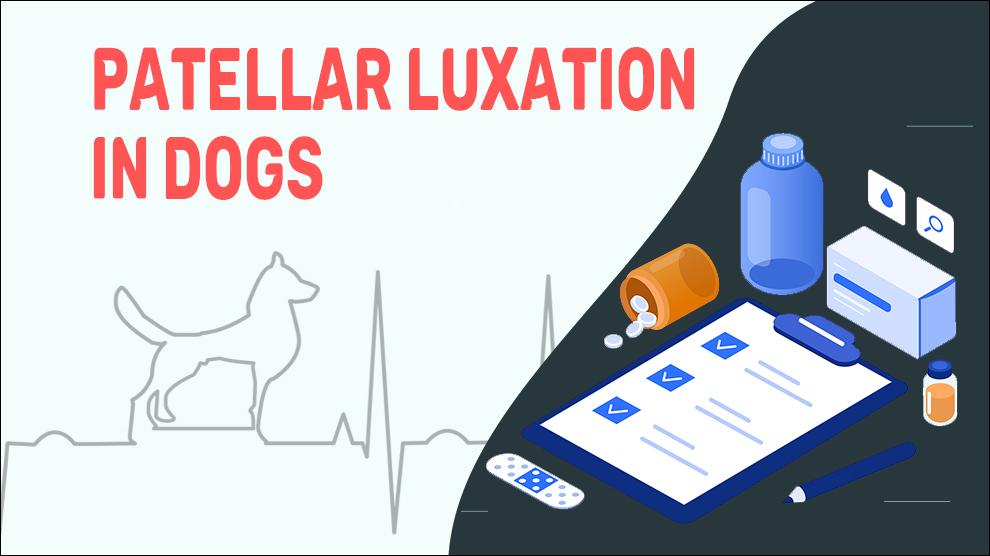What Is Patellar Luxation In Dogs?
Patellar luxation is a common congenital/developmental musculoskeletal disorder in dogs and one of the most common causes of lameness in dogs.
This could also result as secondary to a traumatic accident causing stretching or tearing of the joint capsule and fascia, leading to femoropatellar instability.
Luxating patella simply means that the kneecap (patella) is dislocated from its normal anatomic position in the groove of the femur (thigh bone) and it is no longer able to slide across this groove.
Symptoms Of Patellar Luxation In Dogs
- Exercise Intolerance
- Joint Pain
- Leg Pain
- Limping
- Standing In Front Feet
- Swelling Of The Legs
- Unable To Bend Legs
- Weakness In Legs
Treatment Options For Patellar Luxation In Dogs
Luxating patella can be treated based on the severity of the disease.
Dogs exhibiting the first level of symptoms will be treated with anti-inflammatory drugs and pain killers.
The luxating patella of the second level is always treated only through the surgical method because it is considered by all to be the most effective. This method is undertaken since it is important to do some corrections to the kneecap structure and ensure its smooth movement.
A veterinarian surgeon mainly performs two things:
- He fastens the kneecap outside of the bone to avoid it from sliding inside.
- Deepening the groove of the thigh bone to assure that the kneecap remains intact.
The recovery time is normally between 8 to 10 weeks.
Home Remedies For Patellar Luxation In Dogs
Maintaining the right body weight will lessen the joint pressure thereby reducing the pain. Always feed your dog with low-carb, less-fat food.
You can feed joint supplements that contain Omega3 fatty acids, glucosamine, and chondroitin that help strengthen the joint and cartilage tissues.
The next thing is giving the right exercises to maintain their muscle mass and support their joints.
Apply cold packs to the stifle to help reduce inflammation. This acts as an analgesic too and this can easily be done at home.
You can stretch the soft tissues towards the very side of the luxation and this aids to reorient patellar pull.
Prevention Of Patellar Luxation In Dogs
The condition of patellar luxation is often associated with genetic issues. Avoid breeding any canine with a knee cap problem.
If the parent was a victim of this disease, always be cautious. Feed the prone dogs with extra care and make sure to include of raw food diet and maintain a proper intake of vitamins.
Affected Dog Breeds Of Patellar Luxation
Small Dog Breeds, Maltese, Chihuahua, French Poodle, Bichon Frise, Puppies
Additional Facts For Patellar Luxation In Dogs
Patellar luxation can be classified as medial, lateral, or bidirectional. This just indicates the direction in which the kneecap may be sliding. Medial luxation is more prevalent than lateral luxation and it is commonly diagnosed in small breeds. The less prevalent Lateral luxation is commonly diagnosed in large or giant breed dogs. If a dog’s patella does not stay in its normal position in the groove and it is sliding on the inner aspect of the knee, then this is considered a medial luxation patella and when the dislocated kneecap moves away from the femoral groove when the knee is flexed, it is lateral luxation.
This patella can luxate or displace, medially or laterally. This may lead to osteoarthritis and presents varying degrees of lameness. Female canines are more susceptible to this condition than their male counterparts.
The common causes of patellar luxation include tibial deformity, bowing of the distal femur, femoral epiphyseal dysplasia, atrophy of the quadriceps, rotational instability of the stifle joint, shallow trochlear groove with hypoplastic or missing trochlear ridges and hip dysplasia.
When To See A Vet For Patellar Luxation In Dogs?
If your dog limps and if it has a genetic issue of the disease, contact your vet immediately to treat the disease at the earliest and to reduce the risk of your dog getting arthritis in the future.
Food Suggestions For Patellar Luxation In Dogs
You can try feeding your dog grain-free food. Grains normally aggravate any inflammation.
You can also give him joint strengthening food supplements.
Conclusion
This disorder is mainly related to genetic issues. If you are planning to buy a dog, do thorough scrutiny on the breed geneology and get a puppy that has parents with no knee cap problem.

















